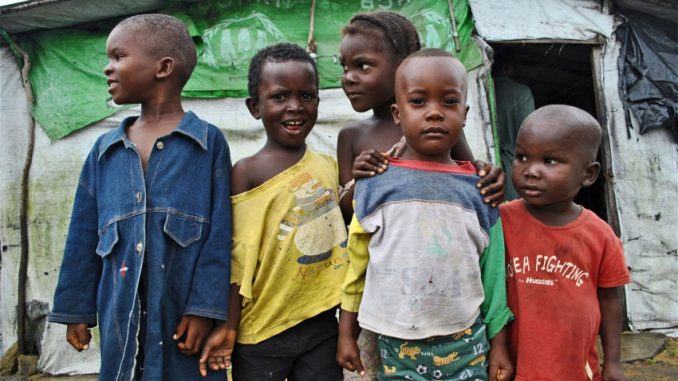 PRESS RELEASE PRESS RELEASE
Over 7 million children are on the move in West and Central Africa each year
Vast majority of child migrants uprooted by violence, poverty and climate change remain in Africa
DAKAR/NEW YORK, 5 July 2017 – Children account for over half of the 12 million West and Central African people on the move each year, with some 75 per cent of them remaining in sub-Saharan Africa, and less than one in five heading to Europe – UNICEF announced today as part of a new report.
In Search of Opportunities: Voices of children on the move in West and Central Africa looks at the main drivers behind regional child migration and displacement, as well as longer-term implications for the region if these large scale population movements intensify as projected with current trends in population growth.
“Children in West and Central Africa are moving in greater numbers than ever before, many in search of safety or a better life,” said UNICEF Regional Director Marie-Pierre Poirier. “Yet the majority of these children are moving within Africa, not to Europe or elsewhere. We must broaden the discussion on migration to encompass the vulnerabilities of all children on the move and expand systems to protect them, in all their intended destinations.”
The report, which is based on a series of interviews with migrants and their families from several countries, reveals a complex set of drivers for migration beyond poverty. It suggests that migration involving children and young people from West and Central Africa is likely to increase due to a confluence of factors including rapid population growth and urbanization, unequitable economic development, persistent conflict, weak governance and limited institutional capacity to support the most vulnerable populations.
Climate change is also a major factor driving migration in West and Central Africa. The region is projected to experience a three to four degree rise in temperature this century – more than one and a half times higher than anywhere else in the world. Severe flooding and drought is already causing the loss of livelihoods and displacement, while changing climate patterns are making some forms of agriculture increasingly unsustainable. Tensions over access to scarce resources for cattle and livestock are leading to hostilities in some rural areas, pushing greater numbers of people towards cities.
The report finds that the region lacks sufficient protection systems – both within and across borders – to ensure the safety and wellbeing of refugee and migrant children, a gap which will become more pronounced with the projected increase in both national populations and migration. The report recommends that policy makers put children at the centre of any response to migration. This can be done by strengthening the chain of protection for children between countries of origin, transit and destination. The close cooperation of governments, UN, and non-governmental partners is critical in to ensure children’s access to healthcare, education and other essential services, regardless of their migration status.
UNICEF continues to urge all governments, in West and Central Africa, in Europe and elsewhere to adopt the six-point Agenda for Action for the protection of refugee and migrant children:
1. Protect child refugees and migrants, particularly unaccompanied children, from exploitation and violence;
2. End the detention of children seeking refugee status or migrating, by introducing a range of practical alternatives;
3. Keep families together as the best way to protect children and give children legal status;
4. Keep all refugee and migrant children learning and give them access to health and other quality services;
5. Press for action on the underlying causes of large scale movements of refugees and migrants;
6. Promote measures to combat xenophobia, discrimination and marginalization in countries of transit and destination.
In addition to this Agenda for Action, UNICEF has also launched a Campaign urging the public to stand in solidarity with refugee and migrant children uprooted by war, violence and poverty. The “#AChildIsAChild” campaign has so far been supported on social media by more than 2 million people.
###
Note to editors: download photos, video and b-roll here:
http://weshare.unicef.org/Package/2AMZIFLBZWE7 ;
For more information visit: https://www.unicef.org/emergencies/childrenonthemove/uprooted/ ;
About UNICEF
UNICEF promotes the rights and wellbeing of every child, in everything we do. Together with our partners, we work in 190 countries and territories to translate that commitment into practical action, focusing special effort on reaching the most vulnerable and excluded children, to the benefit of all children, everywhere.
For more information about UNICEF and its work for children, visit www.unicef.org.
Follow UNICEF on Twitter and Facebook
For more information, please contact:
Harriet Mason, UNICEF Communications Officer, hmason@unicef.org, Tel. +232 (0) 78 597 004 |

